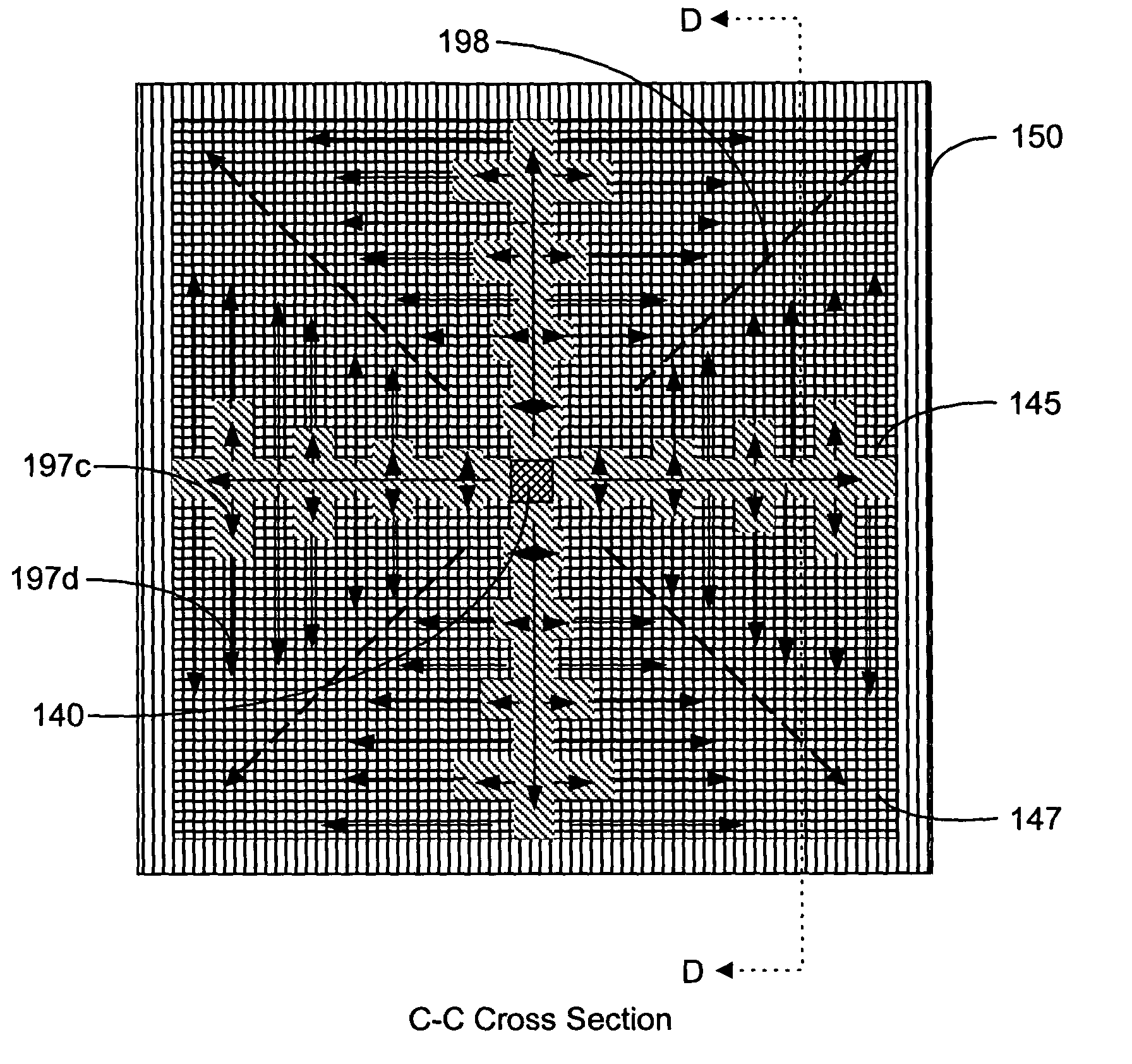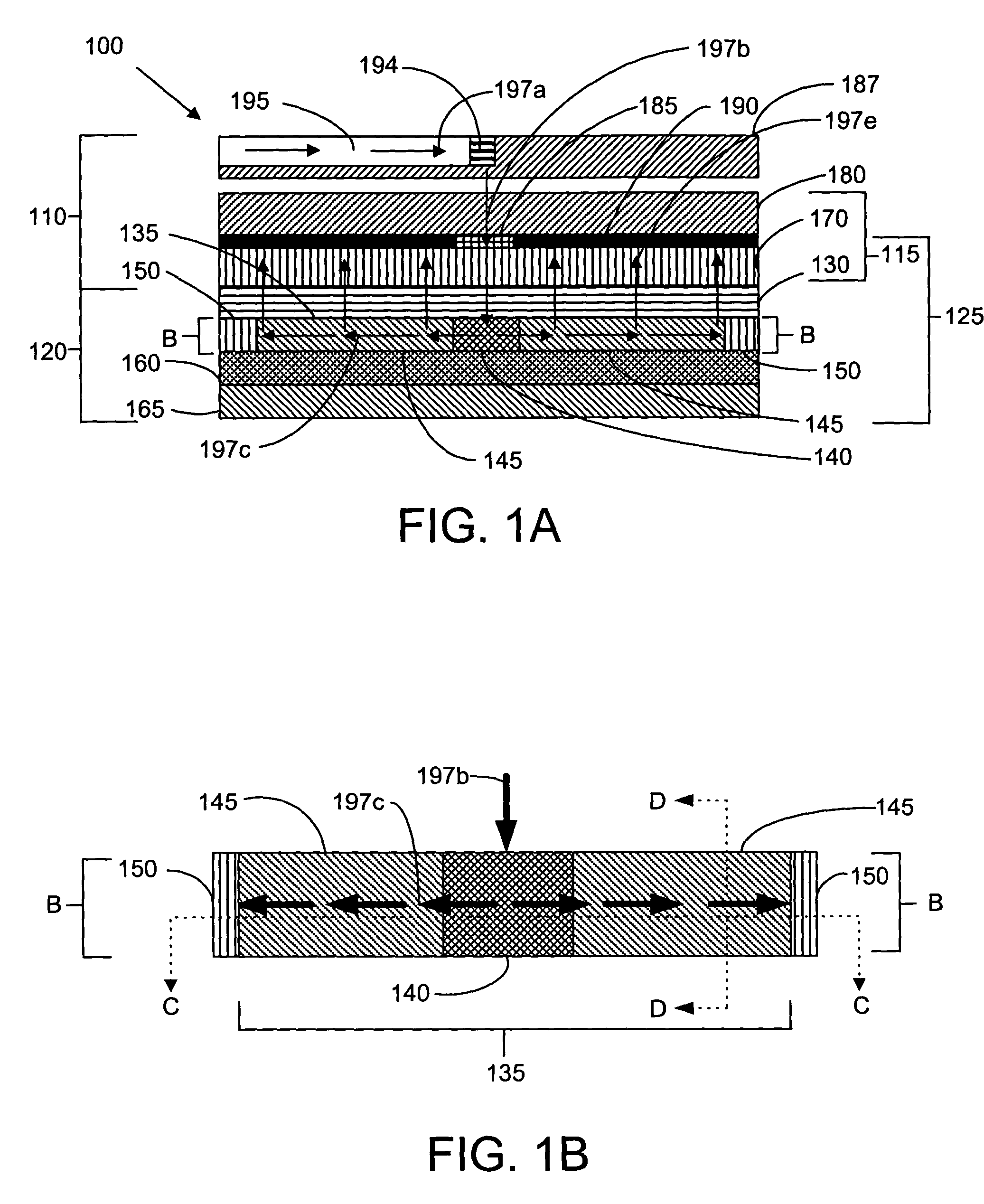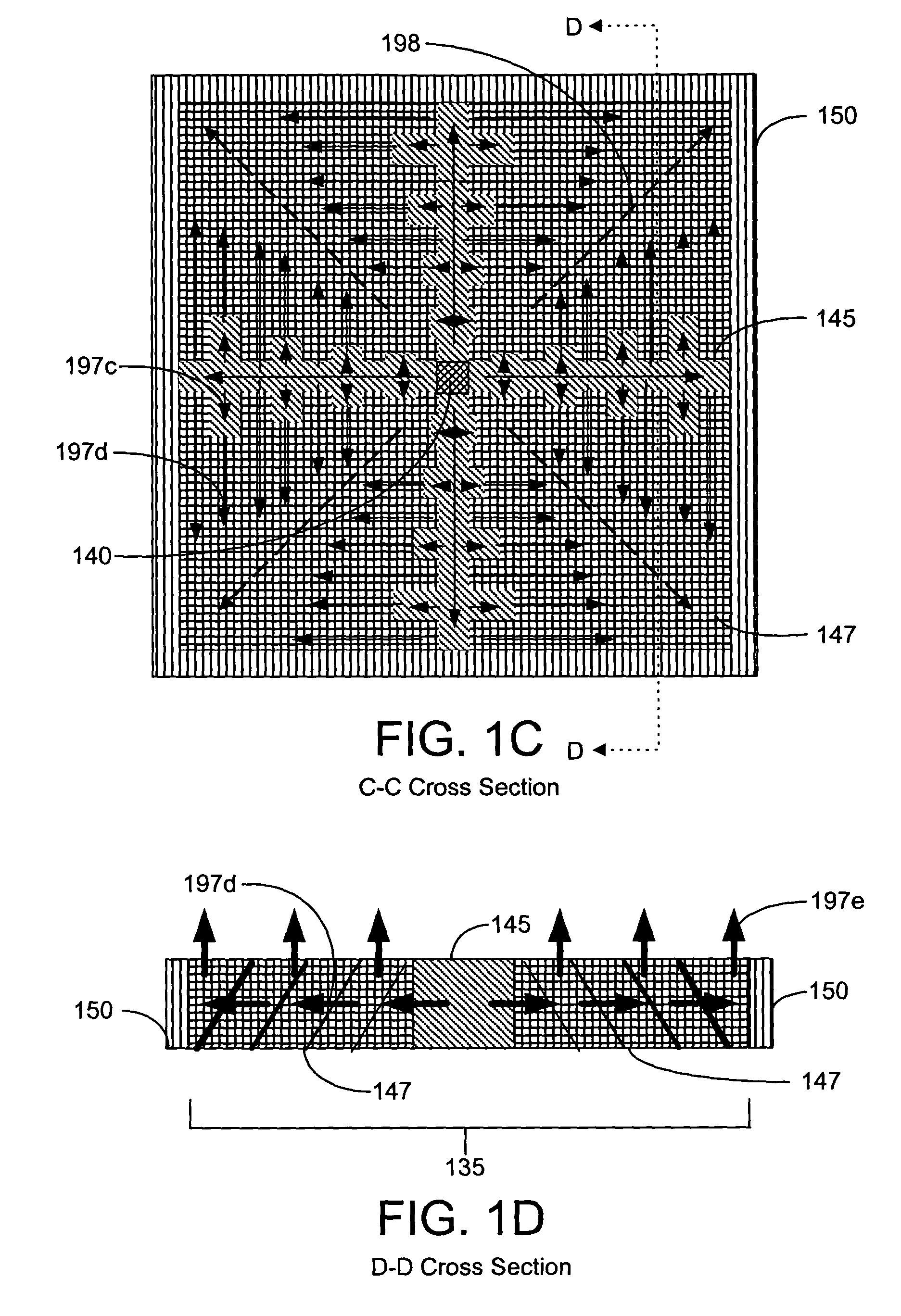Back-side-of-die, through-wafer guided-wave optical clock distribution networks, method of fabrication thereof, and uses thereof
- Summary
- Abstract
- Description
- Claims
- Application Information
AI Technical Summary
Problems solved by technology
Method used
Image
Examples
example 1
[0029]FIG. 1A is a cross-sectional view of a representative embodiment of a back-side-of-die, through-wafer guided-wave optical clock distribution system (network) 100 with off-chip optical clock signal generation, where no on-chip routing of the optical signal occurs prior to coupling the signal to the back-side-of-die core layer from an off-chip optical source. The back-side-of-die, through-wafer guided-wave optical clock distribution system 100 includes front-side layers 110 and back-side layers 120. The front-side layers 110 include, but are not limited to, a device substrate 170, a packaging layer 180, a printed wiring board substrate 187, an optical via 185, and device circuitry 190. The back-side layers 120 include, but are not limited to, a first cladding layer 130, a core layer 135, a horizontal reflection absorption layer 150, a second cladding layer 160, and a vertical reflection absorption layer 165. The core layer 135 includes, but is not limited to, multiplexed vertica...
example 2
[0058]FIG. 2 is a cross-sectional view of another representative embodiment of a back-side-of-die, through-wafer guided-wave optical clock distribution system 200 with off-chip optical clock signal generation, where chip-level distribution of the optical clock signal occurs prior to coupling the signal to the back-side-of-die core layer.
[0059]The back-side-of-die, through-wafer guided-wave optical clock distribution system 200 includes, but is not limited to, front-side layers 210 and back-side layers 220. The front-side layers 210 include, but are not limited to, a device substrate 270, a packaging layer 280, a printed wiring board substrate 287, an optical via 285, and device circuitry 290. The back-side layers 220 include, but are not limited to, a first cladding layer 230, a core layer 235, a horizontal reflection absorption layer 250, a second cladding layer 260, and a vertical reflection absorption layer 265. The core layer 235 includes, but is not limited to, a vertical-to-ho...
example 3
[0063]FIG. 3 is a cross-sectional view of yet another representative embodiment of a back-side-of-die, through-wafer guided-wave optical clock distribution system 300 with on-chip optical clock signal generation.
[0064]The back-side-of-die, through-wafer guided-wave optical clock distribution system 300 includes front-side layers 310 and back-side layers 320. The front-side layers 310 include, but are not limited to, a device substrate 370, a packaging layer 380, a printed wiring board substrate 387, an optical source 399, and device circuitry 390. The back-side layers 320 include, but are not limited to, a first cladding layer 330, a core layer 335, a horizontal reflection absorption layer 350, a second cladding layer 360, and a vertical reflection absorption layer 365. The core layer 335 includes, but is not limited to, a vertical-to-horizontal input diffraction grating 340, a horizontal-to-horizontal diffraction grating 345, and a horizontal-to-vertical output diffraction grating ...
PUM
 Login to View More
Login to View More Abstract
Description
Claims
Application Information
 Login to View More
Login to View More - R&D
- Intellectual Property
- Life Sciences
- Materials
- Tech Scout
- Unparalleled Data Quality
- Higher Quality Content
- 60% Fewer Hallucinations
Browse by: Latest US Patents, China's latest patents, Technical Efficacy Thesaurus, Application Domain, Technology Topic, Popular Technical Reports.
© 2025 PatSnap. All rights reserved.Legal|Privacy policy|Modern Slavery Act Transparency Statement|Sitemap|About US| Contact US: help@patsnap.com



